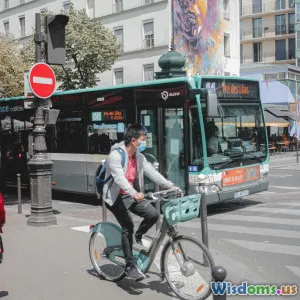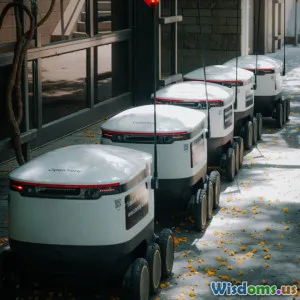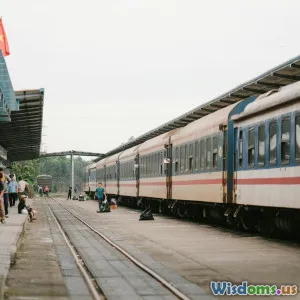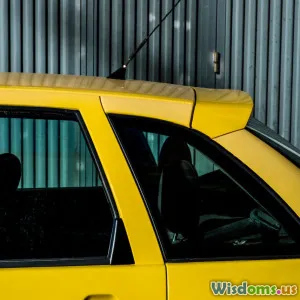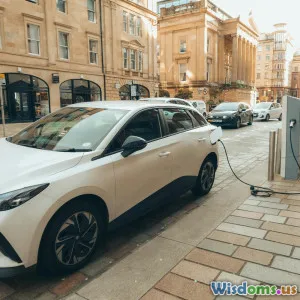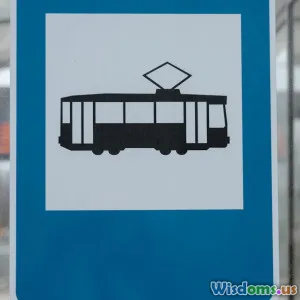
Mobility Solutions for Urban Areas
7 min read Explore innovative mobility solutions transforming urban transportation for cleaner, efficient, and smarter cities. (0 Reviews)
Mobility Solutions for Urban Areas: Navigating the Future of Urban Transport
As urban populations continue to swell, cities worldwide are grappling with growing transportation challenges. Congestion snarls daily commutes, air pollution threatens public health, and traditional transport modes strain to keep up with demand. However, innovative mobility solutions offer promising new pathways to build cleaner, more efficient, and more connected urban environments. This article dives deep into the transformative trends and technologies reshaping urban mobility.
The Urban Mobility Challenge: More Than Just Traffic
Urban areas host more than half of the world's population, and this share is projected to reach 68% by 2050 according to the United Nations. With millions of people moving around cities, the demand for effective transportation options is booming.
The Toll of Congestion and Pollution
- Congestion: In metropolitan hubs like New York, London, and Mumbai, commuters spend an average of 100 hours yearly stuck in traffic — resulting in lost productivity and increased stress.
- Environmental impact: Transportation accounts for nearly 24% of global CO2 emissions, making urban transport emissions a critical environmental challenge.
Inequity and Accessibility Issues
Not all city residents benefit equally from existing transportation infrastructure. Low-income neighborhoods often suffer from inadequate transit options and longer commutes, exacerbating social disparities.
Innovative Urban Mobility Solutions
Cities are responding to these challenges through multifaceted strategies that leverage technology, policy, and design principles.
1. Shared Mobility and Microtransit
Shared transport models, ranging from bike-share systems to ride-hailing, help reduce the number of private vehicles on roads. For example, Minneapolis-Saint Paul reported a 27% decrease in single-occupant vehicles due to bike and scooter sharing expansion.
- Electric scooters & bikeshare: These systems facilitate short trips, cutting down on car use. Companies like Lime and Bird have revolutionized last-mile connectivity globally.
- Microtransit: Flexible bus services responding to real-time demand reduce reliance on high-capacity feeder buses, increasing convenience.
2. Electrification of Urban Fleets
Electric vehicles (EVs) are central to reducing pollution and improving air quality. Many cities have implemented EV fleets for public transit and municipal services.
- Example: Shenzhen, China, converted its entire bus fleet—approximately 16,000 buses—to electric by 2017, drastically cutting emissions.
- Charging infrastructure: Innovative wireless and fast-charging solutions reduce downtime, encouraging wider EV adoption.
3. Smart Infrastructure and Data-Driven Traffic Management
Cities are harnessing IoT sensors, AI, and big data to optimize traffic flows.
- Adaptive traffic signals: Systems that react in real-time to congestion reduce delays by up to 15%. San Diego’s implementation of smart signals decreased travel time and emissions substantially.
- Real-time information: Mobile apps providing live transit updates empower commuters to plan efficient trips.
4. Integration of Public Transit and Mobility-as-a-Service (MaaS)
Interoperability among transport modes under unified payment and scheduling platforms streamlines commuting.
- Helsinki’s MaaS platform integrates buses, taxis, subways, and bike rentals through one app, resulting in 35% smaller car ownership rates.
5. Urban Design and Car-Free Zones
Rethinking physical spaces to prioritize pedestrians, cyclists, and public transport supports sustainable mobility.
- Example: Barcelona’s "Superblocks" restrict car access within neighborhoods, creating walkable, pollution-reduced zones.
The Role of Policy and Stakeholder Collaboration
Technologies alone are insufficient. Effective policies incentivizing sustainable choices and investments in infrastructure are vital.
- Congestion pricing, such as London’s charge zone, discourages car travel during peak hours with measurable traffic reduction.
- Public-private partnerships accelerate deployment of innovations like EV charging.
Challenges and Considerations
Despite gains, several issues persist:
- Equity: Ensuring mobility solutions serve all demographics is crucial.
- Privacy: Data collection for smart systems requires safeguarding city residents’ information.
- Behavioral change: Overcoming entrenched car-dependency depends on cultural shifts complemented by incentives.
Conclusion: Steering Toward Sustainable Urban Mobility
The future of urban mobility lies in integrating technology, policy, and community-centric design to tackle pressing challenges of congestion, pollution, and accessibility. Shared and electric mobility solutions combined with data-driven infrastructure management and visionary urban planning demonstrate what’s possible. Cities that invest boldly today will not only reduce carbon footprints but also enhance quality of life and economic vitality.
The momentum for change is already accelerating. Whether as policymakers, innovators, or everyday commuters, embracing and advocating for smart mobility solutions can unlock the full potential of sustainable urban living.
“The cities of tomorrow must prioritize mobility that is inclusive, sustainable, and smart – only then can we meet the complex transportation demands of burgeoning urban populations.” — Urban Mobility Expert, Dr. Elisa Martinez
Sources:
- United Nations, Department of Economic and Social Affairs (2018). World Urbanization Prospects
- International Energy Agency, Global EV Outlook 2023
- Transport for London, Congestion Charge Evaluation Report
- Bloomberg NEF, Electric Vehicle Outlook 2024
- City of Shenzhen Official Reports
Rate the Post
User Reviews
Popular Posts











